Myristica fragrans Extract Regulates Gut Microbes and Metabolites to Attenuate Hepatic Inflammation and Lipid Metabolism Disorders via the AhR-FAS and NF-κB Signaling Pathways in Mice with Non-Alcoholic Fatty Liver Disease
- PMID: 35565666
- PMCID: PMC9104743
- DOI: 10.3390/nu14091699
Myristica fragrans Extract Regulates Gut Microbes and Metabolites to Attenuate Hepatic Inflammation and Lipid Metabolism Disorders via the AhR-FAS and NF-κB Signaling Pathways in Mice with Non-Alcoholic Fatty Liver Disease
Abstract
Recent studies have shown that non-alcoholic fatty liver disease (NAFLD) is closely related to the gut microbiome. Myristica fragrans is widely used as a traditional seasoning and has a therapeutic effect on gastrointestinal diseases. Although previous studies have shown that M. fragrans extracts have anti-obesity and anti-diabetes effects in mice fed a high-fat diet, few studies have determined the active components or the corresponding mechanism in vivo. In this study, for the first time, an M. fragrans extract (MFE) was shown to be a prebiotic that regulates gut microbes and metabolites in mice fed a high-fat diet. Bioinformatics, network pharmacology, microbiome, and metabolomics analyses were used to analyze the nutrient-target pathway interactions in mice with NAFLD. The National Center for Biotechnology Information Gene Expression Omnibus database was used to analyze NAFLD-related clinical data sets to predict potential targets. The drug database and disease database were then integrated to perform microbiome and metabolomics analyses to predict the target pathways. The concentrations of inflammatory factors in the serum and liver, such as interleukin-6 and tumor necrosis factor-α, were downregulated by MFE. We also found that the hepatic concentrations of low-density lipoprotein cholesterol, total cholesterol, and triglycerides were decreased after MFE treatment. Inhibition of the nuclear factor kappa B (NF-κB) pathway and downregulation of the fatty acid synthase (FAS)-sterol regulatory element-binding protein 1c pathway resulted in the regulation of inflammation and lipid metabolism by activating tryptophan metabolite-mediated aryl hydrocarbon receptors (AhR). In summary, MFE effectively attenuated inflammation and lipid metabolism disorders in mice with NAFLD through the NF-κB and AhR-FAS pathways.
Keywords: Myristica fragrans extract; aryl hydrocarbon receptor; gut microbes; metabolites; non-alcoholic fatty liver disease; nuclear factor kappa B.
Conflict of interest statement
This work has not been published previously and the authors declare no conflict of interest.
Figures
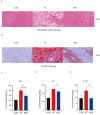
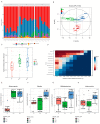
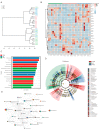
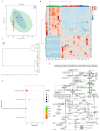
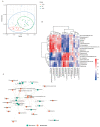

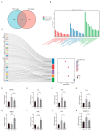
Similar articles
-
The Protective Effect of Myristica fragrans Houtt. Extracts Against Obesity and Inflammation by Regulating Free Fatty Acids Metabolism in Nonalcoholic Fatty Liver Disease.Nutrients. 2020 Aug 19;12(9):2507. doi: 10.3390/nu12092507. Nutrients. 2020. PMID: 32825154 Free PMC article.
-
Astragalus mongholicus polysaccharides ameliorate hepatic lipid accumulation and inflammation as well as modulate gut microbiota in NAFLD rats.Food Funct. 2022 Jul 4;13(13):7287-7301. doi: 10.1039/d2fo01009g. Food Funct. 2022. PMID: 35726797
-
Si Miao Formula attenuates non-alcoholic fatty liver disease by modulating hepatic lipid metabolism and gut microbiota.Phytomedicine. 2021 May;85:153544. doi: 10.1016/j.phymed.2021.153544. Epub 2021 Mar 10. Phytomedicine. 2021. PMID: 33773192
-
Non-Alcoholic Fatty Liver Disease.Adv Exp Med Biol. 2017;960:443-467. doi: 10.1007/978-3-319-48382-5_19. Adv Exp Med Biol. 2017. PMID: 28585211 Review.
-
Contribution of the gut microbiota to the regulation of host metabolism and energy balance: a focus on the gut-liver axis.Proc Nutr Soc. 2019 Aug;78(3):319-328. doi: 10.1017/S0029665118002756. Epub 2019 Jan 10. Proc Nutr Soc. 2019. PMID: 30628563 Review.
Cited by
-
From Nucleus to Organs: Insights of Aryl Hydrocarbon Receptor Molecular Mechanisms.Int J Mol Sci. 2022 Nov 29;23(23):14919. doi: 10.3390/ijms232314919. Int J Mol Sci. 2022. PMID: 36499247 Free PMC article. Review.
-
A Scoping Review on Hepatoprotective Mechanism of Herbal Preparations through Gut Microbiota Modulation.Curr Issues Mol Biol. 2024 Oct 16;46(10):11460-11502. doi: 10.3390/cimb46100682. Curr Issues Mol Biol. 2024. PMID: 39451562 Free PMC article.
-
Gut Microbiota-Derived Tryptophan Metabolites Maintain Gut and Systemic Homeostasis.Cells. 2022 Jul 25;11(15):2296. doi: 10.3390/cells11152296. Cells. 2022. PMID: 35892593 Free PMC article. Review.
-
Soybean oil-based HFD induces gut dysbiosis that leads to steatosis, hepatic inflammation and insulin resistance in mice.Front Microbiol. 2024 Aug 6;15:1407258. doi: 10.3389/fmicb.2024.1407258. eCollection 2024. Front Microbiol. 2024. PMID: 39165573 Free PMC article.
-
Endogenous n-3 PUFAs Improve Non-Alcoholic Fatty Liver Disease through FFAR4-Mediated Gut-Liver Crosstalk.Nutrients. 2023 Jan 22;15(3):586. doi: 10.3390/nu15030586. Nutrients. 2023. PMID: 36771292 Free PMC article.
References
-
- Borrelli A., Bonelli P., Tuccillo F.M., Goldfine I.D., Evans J.L., Buonaguro F.M., Mancini A. Role of gut microbiota and oxidative stress in the progression of non-alcoholic fatty liver disease to hepatocarcinoma: Current and innovative therapeutic approaches. Redox Biol. 2018;15:467–479. doi: 10.1016/j.redox.2018.01.009. - DOI - PMC - PubMed
-
- Rahman K., Desai C., Iyer S.S., Thorn N.E., Kumar P., Liu Y., Smith T., Neish A.S., Li H., Tan S. Loss of Junctional Adhesion Molecule A Promotes Severe Steatohepatitis in Mice on a Diet High in Saturated Fat, Fructose, and Cholesterol-ScienceDirect. Gastroenterology. 2016;151:733–746. doi: 10.1053/j.gastro.2016.06.022. - DOI - PMC - PubMed
MeSH terms
Substances
Grants and funding
LinkOut - more resources
Full Text Sources
Medical
Research Materials
Miscellaneous

